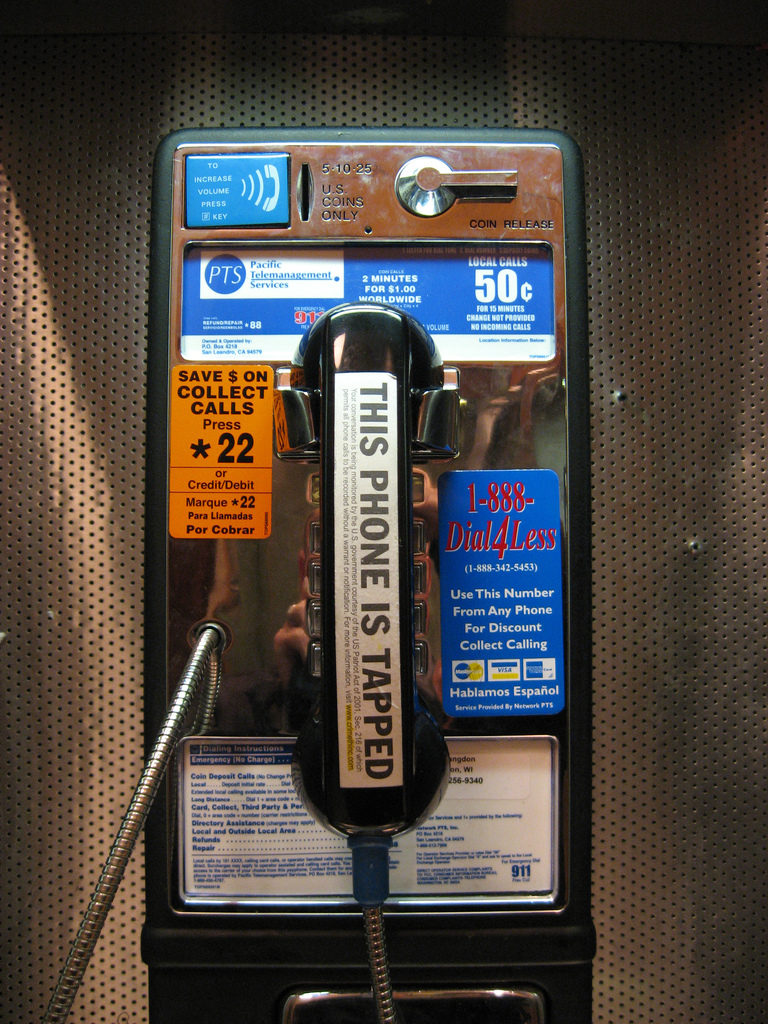
By Amy Kerlin, Staff Writer
In Commonwealth v. Fant, the Pennsylvania Supreme Court recently held that the device used for communication between an inmate behind a glass wall and a visitor is not a telephone and is therefore not excluded from Pennsylvania’s Wiretap Act.[1]
Pennsylvania’s Wiretap Act protects the privacy of citizens by generally prohibiting the interception of wire or oral communications.[2] Among its exclusions, Pennsylvania’s Wiretap Act allows correctional facilities to freely monitor or record “telephone calls” from or to an inmate when certain conditions are met.[3] So long as inmates are notified in writing regarding recording, and visitors are also notified of monitoring and recording, “telephone calls” between inmates and visitors can be monitored and recorded by the facility.[4]
Rahiem Cardel Fant pled not guilty to charges related to him allegedly stabbing a man.[5] Awaiting trial, he was detained at the Clinton County Correctional Facility, where he received visitors.[6] During these visitations, conversations between Fant and his visitors while the parties were separated by a glass partition — communicating with a device in which Fant inputted his inmate personal ID number to connect — were monitored and recorded by the facility.[7] On a motion in limine, Fant sought to exclude these recordings.[8]
During a suppression hearing, the court questioned the warden of the facility regarding the fact the conversations do not go through nor get recorded by an outside telephone company.[9] The court ultimately determined that because these conversations did not utilize telephones lines, equipment, or services outside the facility, the device only resembled a telephone; as these conversations are not within the everyday scenario of a telephone call, these visit conversations were not “telephone calls” under the statute.[10]
The Pennsylvania Superior Court reversed the lower court after considering four definitions of “telephone” and because the conversations “go through and are recorded by the inmate phone company.”[11] The Superior Court held that the device was a “telephone” under all four definitions, and the visits were “telephone calls” because of the lack of distinction between internal or external calls in the Act.[12]
On appeal, the Pennsylvania Supreme Court highlighted that the Superior Court opined without citing authority and determined the term “telephone calls” must be construed by its ordinary, everyday meaning.[13] The court, by construing the statute in its contextual entirety rather than “telephone calls” separately and distinctly, determined that the Superior Court’s definitions of “telephone” were too broad and against the drafters’ understanding of the term.[14]
Instead, Pennsylvania’s highest court defined “telephone calls” in the context of the Wiretap Act, as “a communication that involves the (1) dialing of a telephone number, and; (2) an apparatus that is connected by wire or the like to a telephone company” that “(3) permits a caller to converse with a call recipient whose similar apparatus is associated with the dialed telephone number.”[15] The court noted these visit conversations are face-to-face, and although the inmate and visitor use handsets to communicate through the partition, these conversations more closely resemble in-person visits.[16]
The court further reasoned that the use of “calls” alongside “telephone” in the Act refers to a device used to make a telephone call.[17] Because ordinary telephone “calls” require dialing a telephone number specific to another person, the input of an inmate’s personal ID number is not a telephone number.[18] Furthermore, the court determined that “from or to an inmate” refers to a reciprocal functionality where each device has an associated telephone number and either party can dial the other.[19] In the present case, Fant’s visitors were unable to dial anyone, nor were they calling “into” the facility.[20] Rather, the visitors were sitting on the other side of a glass partition face-to-face with Fant.[21]
The court, however, failed to consider the policy implications of strictly inhibiting correctional facilities from freely monitoring and recording these visitation conversations. As Justice Baer noted in his dissent, inmates can now use these conversations to conspire with visitors to destroy evidence, influence witnesses, or smuggle contraband.[22] Furthermore, the court, although fully within its discretion, incorrectly ignored a previous Superior Court holding that inmates do not have a reasonable expectation of privacy during visitation conversations, leaving visitation conversations unprotected under the Act.[23]
Sources
[1] — A.3d —, No. 66 MAP 2015, 2016 WL 5462712, *1, *5 (Pa. September 28, 2016).
[2] Id. at *1; see 18 Pa.C.S.A. § 5708.
[3] 18 Pa.C.S.A. § 5704.
[4] § 5704(14).
[5] Fant, 2016 WL 5462712, at *1.
[6] Id.
[7] Id.
[8] Id.
[9] Id. at *2-3.
[10] Id. at *3.
[11] Commonwealth v. Fant, 109 A.3d 775, 779 (Pa. Super. 2015) (citations omitted).
[12] Id.
[13] Fant, 2016 WL 5462712, at *5-6.
[14] Id.
[15] Id. at *8.
[16] Id. at *6.
[17] Id.
[18] Id.
[19] Id. at *7.
[20] Id.
[21] Id.
[22] Id. at *13 (Baer, J., dissenting).
[23] Commonwealth v. Prisk, 13 A.3d 526 (Pa. Super. 2011).